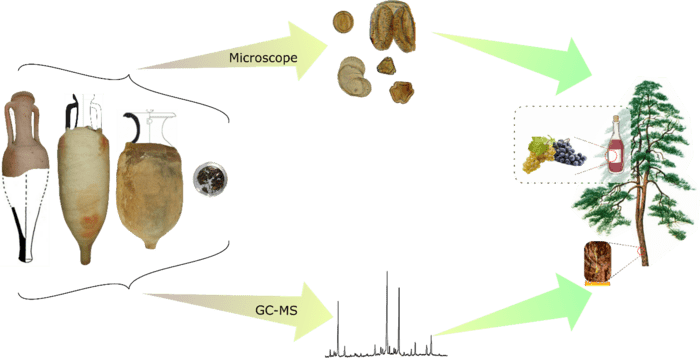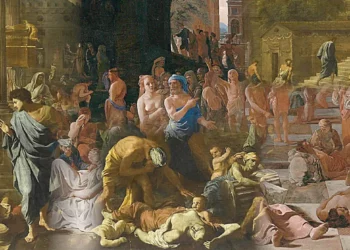
Wine played an important role in the history of the Roman Empire — and the Roman Empire played an important role in the history of wine. Many Romans believed you should drink wine every day, which made the drink “democratic”. Wine wasn’t just a drink for the aristocrats; it was enjoyed by craftsmen and slaves; men and women; urban dwellers and rural inhabitants. If you were a Roman, the odds are you drank wine at least occasionally. Without the Romans’ love for wine, the drink may not be nearly as popular today.
Consuming wine on this scale also meant that you had to produce and distribute wine across the empire. But while we know that Romans did drink a lot of wine, we know less about how they made it. A team of researchers led by Louise Chassouant from Avignon University in France wanted to fill that gap.
The scientists examined three Roman amphorae (large wine jars) that were conserved on the bottom of the sea in the Lazio region of Italy, some 90 km away from Rome. The team deployed a multidisciplinary approach, looking at various chemical markers, as well as plant residue tissue, charcoal, and pollen. The study aimed not just to understand as much as possible about these amphorae, but also to develop a methodology that could be used to study other artifacts as well.
“Our motivation was to check the feasibility to use archaeobotanical tools to unravel the content of archaeological artifacts and if possible, then to develop a multidisciplinary approach,” Chassouant told ZME Science. “And finally, to conclude about the archaeological meaning of using plurisdisciplinary angles of analysis. Pollen and charcoal analysis are too rarely used in the archaeological investigation of artifacts and really little has been published on it. Therefore the purpose was to develop a methodology to allow this kind of analysis from organic materials and to highlight the benefits the method can bring to the field.”

The analysis of the pollen found the grapes were a wild species in the area, suggesting that winemakers used local plants — though it’s unclear whether the grapevines were domesticated at the time. According to Chassouant, this leaves three possibilities: the grapevines were domesticated, they were local plants still bearing wild morphological features, or they were wild grapevines. Notably, Pliny the Elder, a Roman author, naturalist, and natural philosopher from the 1st century AD, recorded the use of an ointment made from wild grape wine.
But while the grapes were local, the pine tar used to seal the amphorae wasn’t. It was likely imported from Calabria or Sicily. Pine tar, a natural wood preservative obtained by slowly burning the resin of pine trees, was used for waterproofing the jars and may have also offered a bit of flavor to the wine. This technique was also found in other archaeological sites.
This type of insight, especially if coupled with similar studies on other sites, could provide a great deal of information about Roman winemaking.
“If there was a message to be retained from this article, it would be related to the multidisciplinary methodology to be applied. Indeed, by using different approaches to unravel the content and nature of the coating layer of Roman amphorae, we have pushed the conclusion further in the understanding of ancient practices than it would have been with a single approach.”
Even for the researchers, it was surprising to see just how much could be learned with this approach. They were expecting the pollen to be there, Chassouant explains, but there was more information than they expected. All in all, the team noted insights about the chemistry of the wine and the pine tar used to seal the wine, the amphorae design, and the biology of the grapes used in the wine.
“We anticipate our study to encourage a more systematic multidisciplinary approach regarding the analysis of wine amphorae,” the researchers conclude.
Journal Reference: Chassouant L, Celant A, Delpino C, Di Rita F, Vieillescazes C, Mathe C, et al. (2022) Archaeobotanical and chemical investigations on wine amphorae from San Felice Circeo (Italy) shed light on grape beverages at the Roman time. PLoS ONE 17(6): e0267129. https://doi.org/10.1371/journal.pone.0267129






